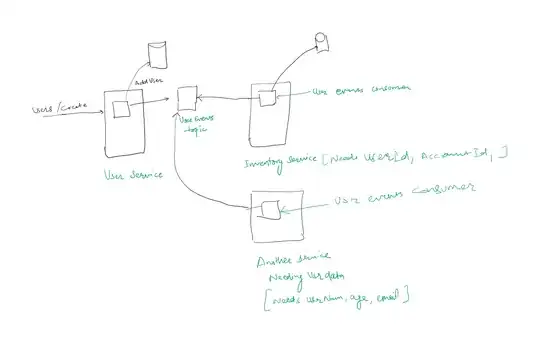I’m finding it hard to avoid data duplication or a shared database for even the simplest microservices design, which makes me think I’m missing something. Here’s a basic example of the problem I’m facing. Assuming someone is using a web application to manage an inventory they would need two services; one for the inventory managing the items and the quantity in stock and a users service that would manage the users data. If we want an audit of who stocked the database we could add the users ID to the database for the inventory service as a last stocked by value.
Using the application we may want to see all the items that are running low, and a list of who stocked them last time so we can ask them to restock it again. Using the architecture described above, a request would be made to the inventory service to retrieve the item details of all items where the quantity is less than 5. This would return a list including the user IDs. Then a separate request would be made to the users service to get the user name and contact details for the list of user IDs obtained from the inventory service.
This seems awfully inefficient and it doesn’t take many more services before we’re making multiple requests to different services APIs which in turn are making multiple database queries. An alternative is to replicate the users details in the inventory data. When a user changes their contact details we would then need to replicate the change through all other services. But this doesn’t seem to fit with the bounded context idea of microservices. We could also use a single database and share this between different services, and have all the problems of an integration database.
What’s the correct/best way to implement this?
